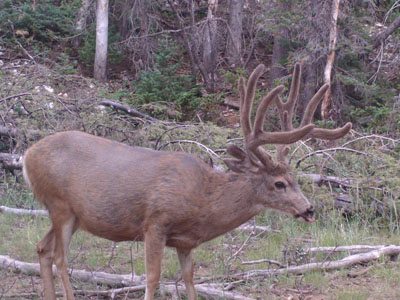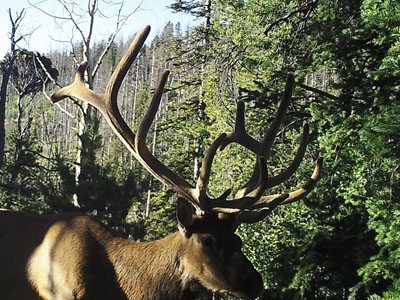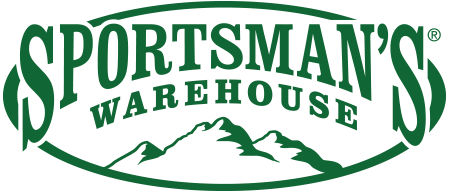One of the first things we start wondering about when glassing with a spotting scope or a set of bino’s after spotting a big game animal is, what does it score? I don’t consider myself a trophy hunter but more of someone who enjoys the hunt itself. When glassing, I am always curious on size and how one would fair when it comes to scoring a big game animal. One of the first things to consider is learning the body size of the game in your local area. These specks do change throughout the country and can have an impact on how you effectively field judge the game you are pursuing.
 A couple things that can help at guiding you in the right direction is by visiting your local taxidermy shops and measuring specific points you can use as references in the field with the local game in your area. For mule deer, ear to ear spread is a great reference to use for inside spread measurements. I tend to use 22 inches as a guideline on mule deer when referencing ear tip to tip spread. Then you can take and measure one ear to get a rough idea using that same measurement in the field when glassing through a spotter. Simply take that ear measurement and break it up on the main beam to see how many times it will stack end for end. This will get you very close to the main beam lengths. Next, look at the G4 measurements; again you can use the ear length as a reference, which is usually around 9”on a mule deer. The G4 measurement is the tine that comes off the main beam. Between the inside spread, the main beam lengths and the G4 measurements, these will put you at roughly half the total score. It can go a little higher but it’s nice to have your first field judge measurement to be under delivered, than over delivered, especially if you end up taking that specific game animal you are field judging. This is a fairly simple breakdown that will get you in the ballpark when glassing those mule deer in the field.
A couple things that can help at guiding you in the right direction is by visiting your local taxidermy shops and measuring specific points you can use as references in the field with the local game in your area. For mule deer, ear to ear spread is a great reference to use for inside spread measurements. I tend to use 22 inches as a guideline on mule deer when referencing ear tip to tip spread. Then you can take and measure one ear to get a rough idea using that same measurement in the field when glassing through a spotter. Simply take that ear measurement and break it up on the main beam to see how many times it will stack end for end. This will get you very close to the main beam lengths. Next, look at the G4 measurements; again you can use the ear length as a reference, which is usually around 9”on a mule deer. The G4 measurement is the tine that comes off the main beam. Between the inside spread, the main beam lengths and the G4 measurements, these will put you at roughly half the total score. It can go a little higher but it’s nice to have your first field judge measurement to be under delivered, than over delivered, especially if you end up taking that specific game animal you are field judging. This is a fairly simple breakdown that will get you in the ballpark when glassing those mule deer in the field. Elk will be no different and you can use parts of the body as reference points to get you in the ballpark when field judging them. I know just in our local area the body measurements can vary depending on the unit you are hunting. Just within a 3 hour drive, I know 2 units that can vary from inside of eye to tip of nose by 2 or 3 inches. This can be a significant amount when trying to estimate total score in the field. There’s one unit locally that from inside of eye, to tip of nose can be more like 11 inches on average. While another unit being only 1 hour away from the other averages more like 14” inside of eye to tip of nose. This is why knowing the local game in your area is critical at giving you a more accurate reading when field judging.
Elk will be no different and you can use parts of the body as reference points to get you in the ballpark when field judging them. I know just in our local area the body measurements can vary depending on the unit you are hunting. Just within a 3 hour drive, I know 2 units that can vary from inside of eye to tip of nose by 2 or 3 inches. This can be a significant amount when trying to estimate total score in the field. There’s one unit locally that from inside of eye, to tip of nose can be more like 11 inches on average. While another unit being only 1 hour away from the other averages more like 14” inside of eye to tip of nose. This is why knowing the local game in your area is critical at giving you a more accurate reading when field judging.Since body size can vary so much on an elk in different units across the country, I just use the average of the eye to tip of nose measurement. Nowadays with the use of Phone Skope adapters etc., you can snap different angle still pictures while glassing and use that nose to inside of eye measurement. Then just scale that on your still pics to get you in the ball park with all the different measurements. From there you can scale all your tine measurements, main beam on both sides and inside spread, leaving you only your mass measurements to get you to your total score. Most mature 6x6 bulls will have an average of 54-60” of mass, so I like to use the lower 54 inches of mass as a general rule of thumb when plugging in your total numbers. Again it’s always better to be underachieving when field judging than over achieving.
When looking at first glance through a spotter I look for bulls fronts to be at least in the 14 to 16 inch range. Generally this is a solid indication of a 300 plus bull and worth breaking down farther for field judging. Once you start getting to that 350 plus range, keep in mind you will more than likely have to have a 16” average measurement on your G1 through your G4’s to get you to that 350 inch range. Remember when scoring say a 6x6 for example you will only be calculating G1 through G5 and not that last tail point on the back end. This is taken up in the overall main beam measurement and sometimes forgotten when adding up the different tine lengths.
Products like Phone Skope, have become a very effective tool at scaling a big game animals rack while trying to field judge them. Using the eye to nose or the ear tip to ear tip measurements in the area you intend to hunt are a valuable tool in helping you field judge a trophy animal. For those traveling outside your local area, a call to a local biologist will help provide the information of those dimensions. The most important part is to never lose sight of the hunt itself and enjoy every moment in God’s country.

